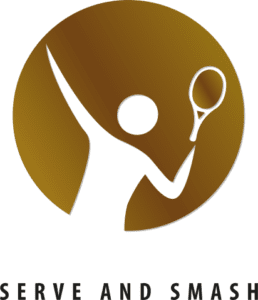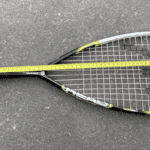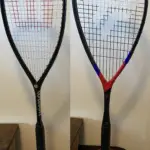This post may contain affiliate links.
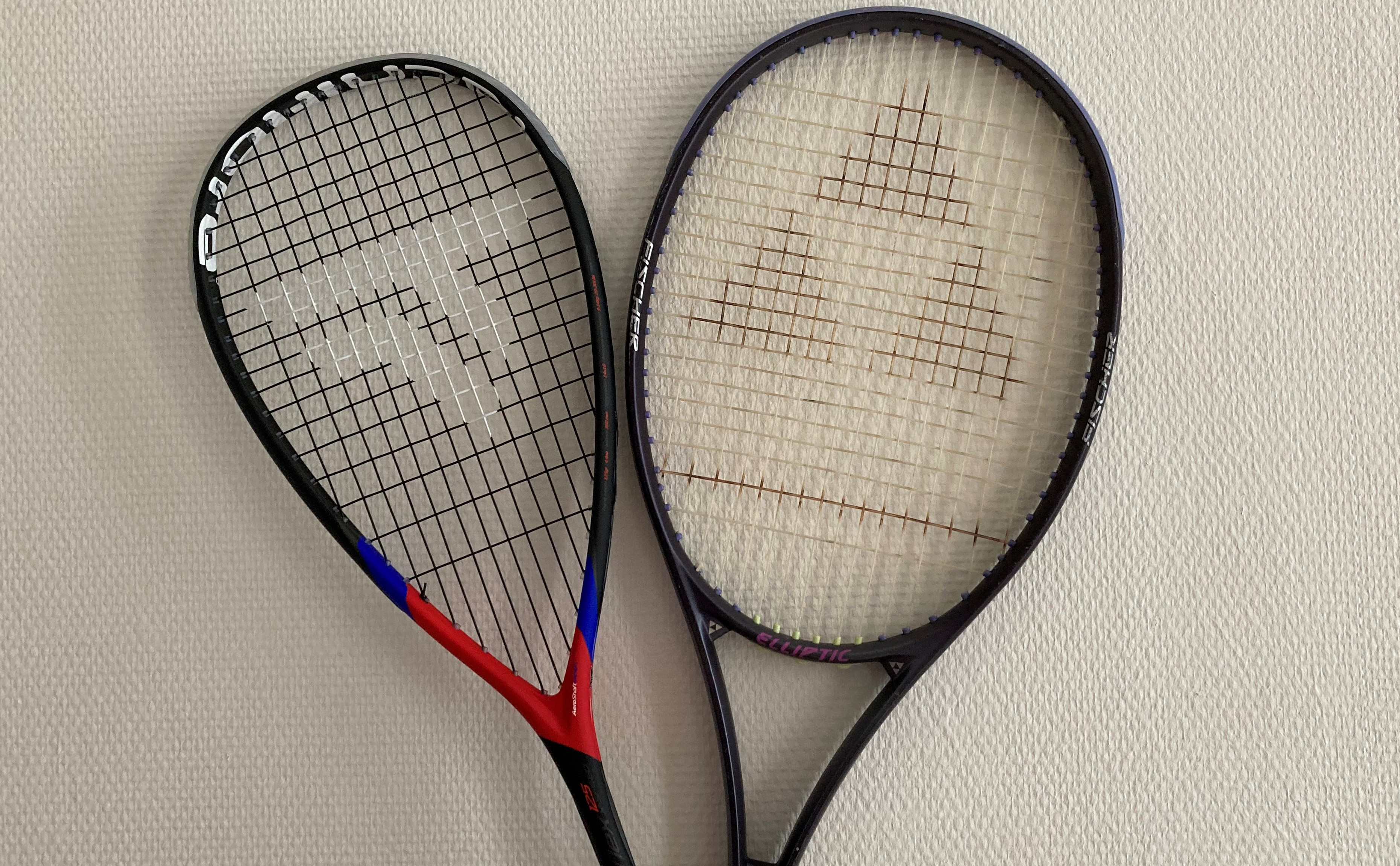
Having played both squash and tennis I began to wonder about the similarities between the rackets and in particular the strings. Besides answering this question, I will go deeper into whether you can buy tennis strings and use them to string your squash racket.
On average squash strings are thinner (higher gauge), require a lower string tension, and have a shorter standard length compared to tennis strings, to accommodate for the shorter squash racket head size. The same materials are generally used to manufacture both squash and tennis strings.
Before we can go into more detail on the similarities between squash strings and tennis strings, let us look at the main differences :
Else, skip ahead and find out what squash strings are made of or if you can use tennis strings for squash.
String gauge
The thickness of most racket strings is measured in gauge. This older measure of thickness was initially used for wires and became the measurement for both squash and tennis strings. However, string thickness is also often notated in millimeters (mm).
The measurement in gauge seems counterintuitive since a higher gauge number indicates a thinner string.
While shopping for a set of squash strings you will find almost all strings classified as either 17 or 18 gauge. This equals the string to be anywhere in between 1.10 mm and 1.25 mm in diameter. These measurements are also most common for factory strings that you will get when you buy a new (prestrung) racket. However, it even occurs that rackets are prestrung with 16 gauge strings to make them more durable.
While thicker strings are more durable, they are less powerful. Thinner strings on the other hand are more flexible and therefore more powerful, but will also break more easily.
Tennis strings are thicker in diameter and usually range somewhere in between 15 (1.40 mm) to 17 gauge (1.20 mm).
How to measure string thickness yourself
Although mentioned on the packaging of the string, you may want to check it yourself. String gauge can be easily measured with a micrometer. If you buy a separate set of strings, great! Make sure the string is not strung or under any tension when you measure it. In fact, a string under tension will become thinner and result in an incorrect (and lower) measurement.
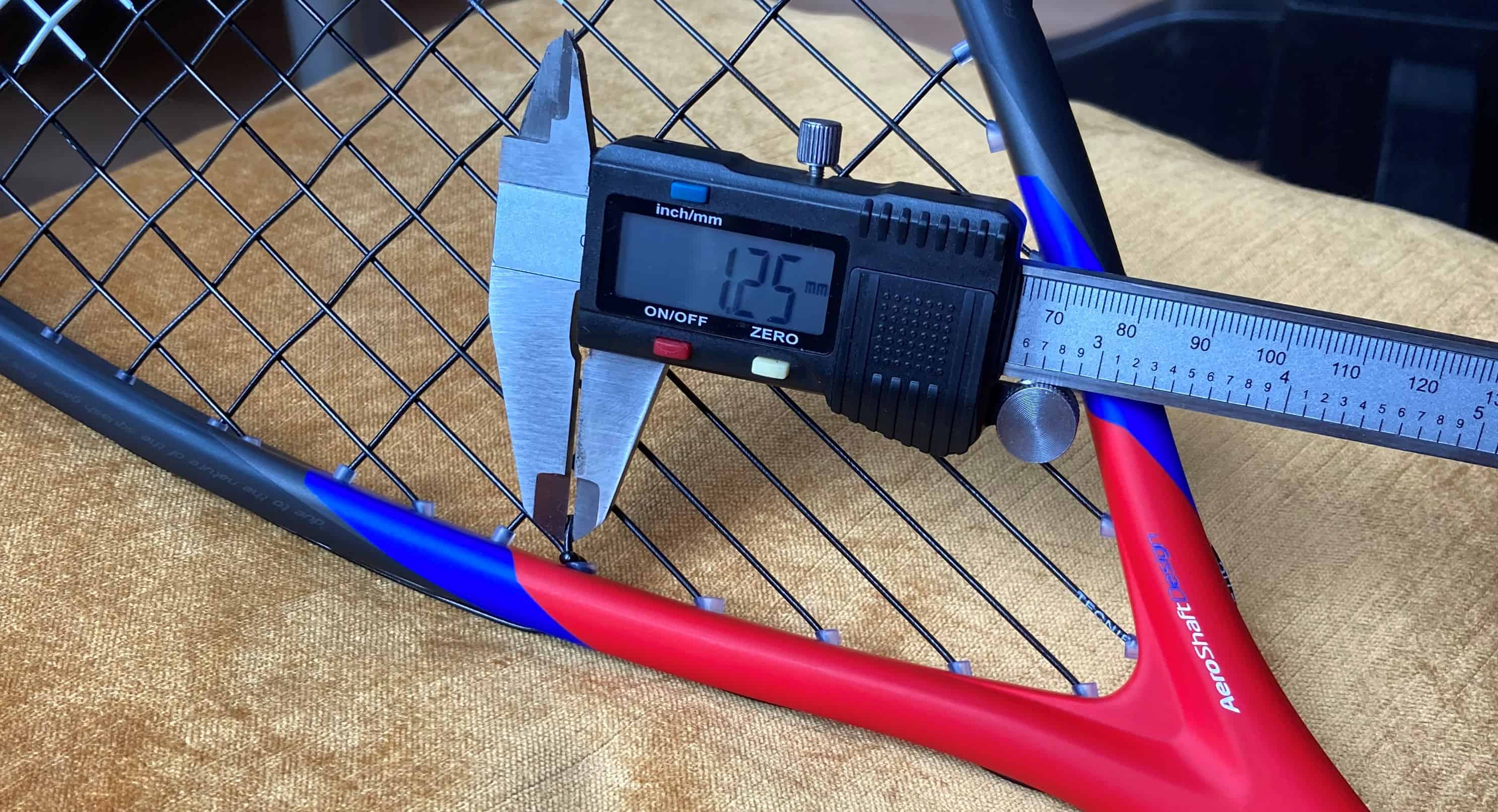
In case you already have a prestrung racket, you can try to read on the string itself and check if the thickness is mentioned in gauge or else in millimeters. Of course, after using the strings for some time, this notation will not be readable. But in this case, I have found something to be somewhat accurate. You can measure the end of the string. This is the little part of the string after the knot. Since it is not under as much tension as the rest of the string, it will give you a more accurate measurement. Nevertheless, the measurement remains most accurate if you have a set of strings.
String tension
Both squash and tennis racket strings become useful once we can hit the ball with sufficient power. In order to achieve this, the strings need to be under tension. Then the question resides, what tension to use?
First of all, let us look at the recommendation made by the racket or string manufacturers. On both the racket and the packaging of a set of strings the recommended tension is mentioned. As a general rule, string tension should be in proportion to head size, thus rackets with a larger head size need more string tension. According to Ashaway , the normal tension for a squash racket is between 25 and 35 lbs (or between 11 and 16 kg).
, the normal tension for a squash racket is between 25 and 35 lbs (or between 11 and 16 kg).
Based on players’ preferences they can go towards the lower or higher end of the recommended range to string their rackets. But why would you go towards a lower or higher tension? Moving towards a higher tension makes the string bed tighter and allows for more control. Opting for a lower tension makes the string bed looser and more flexible. This flexibility of the strings can catapult the ball and give the shot more power.
If you are one of those players that would like to maximize their power by going beyond the recommended tension, be aware! If you string the racket with a higher tension than mentioned as recommended tension, the manufacturer can void the warranty for the racket. Also from a durability point of view, make sure the strings of your racket are not too tight. If your strings are too tight, they can break more easily while playing, due to an overload of stress and potentially warp your racket.
Standard string length
According to the official regulations, squash strings should not exceed 39 cm for an individual racket. This becomes only relevant if you want to partake in any WSF-officiated matches or tournaments.
On the packaging of a set of both squash and tennis strings, the length is quite prominently mentioned. For squash strings, this standard string length is between 30 and 33 feet or 9 and 10 meters. Ashaway for example uses a standard length of 30 feet or 9 meters. Tennis string sets are sold in a standard string length of 40 feet, which equals 12 meters.
Note that strings can also come in a reel of 200 meters (656 feet), which is a more budget-friendly option based on the cost per strung racket.
What are Squash Strings Made of?
Most squash strings are made of a multifilament construction, meaning the string is made up of several components, such as nylon, polyester, rayon, kevlar, titanium, or carbon.
Since rackets are already stringed when purchased, you might not even consider that not all strings are created equal. Despite the fact that several brands sell their own strings, the main difference is in used materials.
Strings made of softer materials break more easily, thus increase the risk of warping your racket while playing. Strings made from stronger materials are therefore more durable. As mentioned, a multifilament construction from nylon, polyester, rayon, kevlar, titanium, or carbon is used most often for squash rackets. However, monofilament constructions from nylon, polyester, and polymer are also used.
The outside layer of the string has the function to control the ball and limit the wear and tear of the string, thus enhances durability. The core of the string will provide elasticity and allow you to hit the ball with power. According to Ashaway , one of the main manufacturers of squash strings, the demand for new synthetic string combinations will rise in order to create thicker, more durable strings.
, one of the main manufacturers of squash strings, the demand for new synthetic string combinations will rise in order to create thicker, more durable strings.
Besides the durability aspect of it, there is another difference between the type of construction. Nylon monofilaments are stiffer and better at conserving their tension. Multifilament strings, on the other hand, face more tension loss, also known as creep. Ashaway offers several monofilament Zyex (polymer-based) strings that limit creep, thus maintain their tension better over time.
Can I Use Tennis Strings for Squash?
For best performance, only tennis strings with 17 or 18 gauge should be used for squash rackets. Tennis strings with a lower gauge will result in a less powerful and suboptimally performing racket.
To play devil’s advocate, some people are of the opinion to use tennis strings for squash but only lowering the tension to increase the power. Lowering the tension makes sense since on average tennis strings are thicker (lower gauge) and less powerful. From a standard string length point of view, you can buy a set of tennis strings, since they are longer than squash strings.
Despite these arguments, I do not recommend using anything other than 17 or 18 gauge string for squash rackets. These strings are specifically designed for squash, thus why not use the strings for their intended purpose?
Sure, you can still buy a 16 gauge string that sometimes comes standard with prestrung squash rackets. However, note that buying this string gauge is classified as a tennis string. Again, since squash rackets and tennis rackets have different head sizes, the tension needs to be taken into consideration. String tension is proportionate to the racket’s head size. Thus if you decide to buy tennis strings, you need to adjust the recommended tension based on this smaller head size of the squash racket.
